Overview
Sporting a cool climate, an astounding ion of magnificent waterfalls, and the best coffee in all of Laos,
the Bolaven Plateau has become a mainstay in any Southern Laos itinerary. Turned into an agricultural powerhouse by the French colonials and their modern farming practices, the population of French plantation owners have all departed the region since independence and the Indochina wars that devastated the plateau. Due to its strategic significance for both North Vietnamese and American forces, Bolaven was heavily bombed during the wars, and plenty of un-exploded ordnances are scattered around, making venturing off marked paths a significant risk.
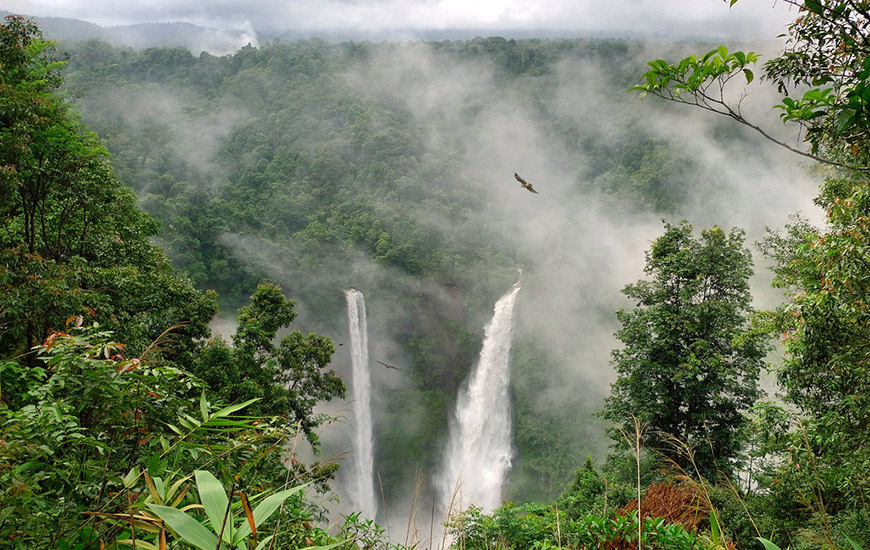
The Bolaven is rich in waterfalls.
While the French focus on coffee plantations remains, the rubber and banana farms of the era have since been replaced with cardamom, rattan and fruit orchards.
Bolaven means “Home of the Laven”, so it should come as no surprise that the most significant ethnicity are the Laven, but others like Alak, Katu, Tahoy and Suay also make their home on the plateau.
See and Do
Paksong, the centre of Laos’ coffee production, was almost completely obliterated during the Second Indochina War. As such, there’s very little to see in the town itself, but the surrounding countryside hosts several amazing waterfalls, as well as a few nature reserves.
First on the list of nearby
waterfalls is
Tat Fan. Sporting two streams that burst out of the surrounding forest before plummeting 120 meters, it’s an amazing sight to behold. In addition to the waterfall, a viewpoint at the Tad Fane Resort provides a spectacular view and should not be missed.
Next is
Tat Gneuang, also made up of two streams, but this time ping 40 meters then flowing into the jungle instead of out of it. Due to the popularity of the site, probably the most visited waterfall in the region, it’s recommended that you either arrive early, or stay late and wait for the crowds to depart.
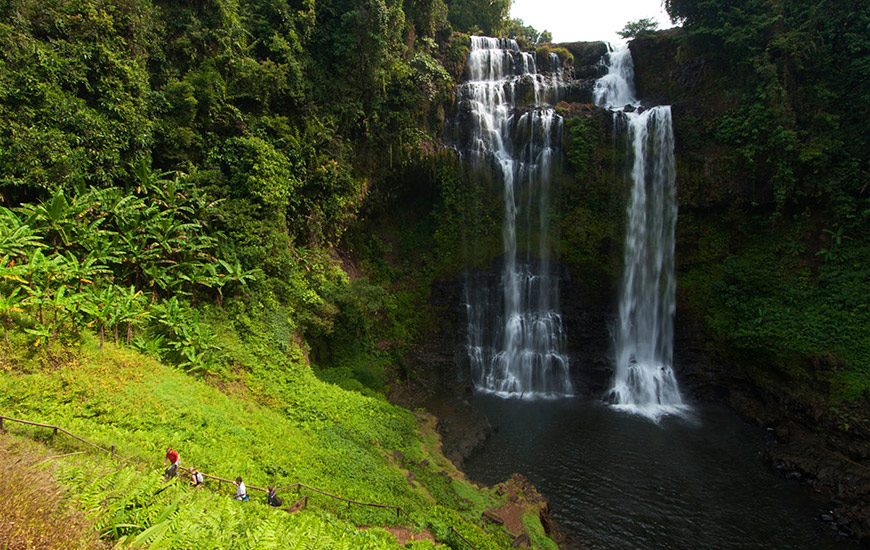
The twin falls of Tat Gneuang.
If you’d like a less crowded waterfall experience,
Tat E-Tu with its impressive 40 meter and comfortable walk to the top might be for you.
For an even more isolated experience than E-Tu, go to
Tat Katamtok, located deep in the forest. Here you can enjoy the 100 meter tall waterfall that bursts out of the lush trees without any sign of human activity despoiling the natural beauty.
Finally,
Tat Champee is arguably the most interesting waterfall to visit here. While it’s the smallest of the waterfalls mentioned in this article, visitors are allowed to go for a swim in the pools, and a path takes you up behind the waterfall itself.
Should you desire even more waterfalls after all this, a visit to
Tayicseua is a good option. With as many as
7 waterfalls located at this
private nature reserve, some near to the entrance/restaurant and some a short trek away, there are a surprisingly low amount of visitors, letting you relax and enjoy the falls in peace and quiet.
Finally, there’s
Dong Hua Sao National Park Area. Though plagued by poaching and illegal land clearance for agricultural purposes, there is still a thriving ecosystem of endangered species here, ranging from monkeys to butterflies to hornbills. However, bear in mind that tours here can only be booked from Pakse.
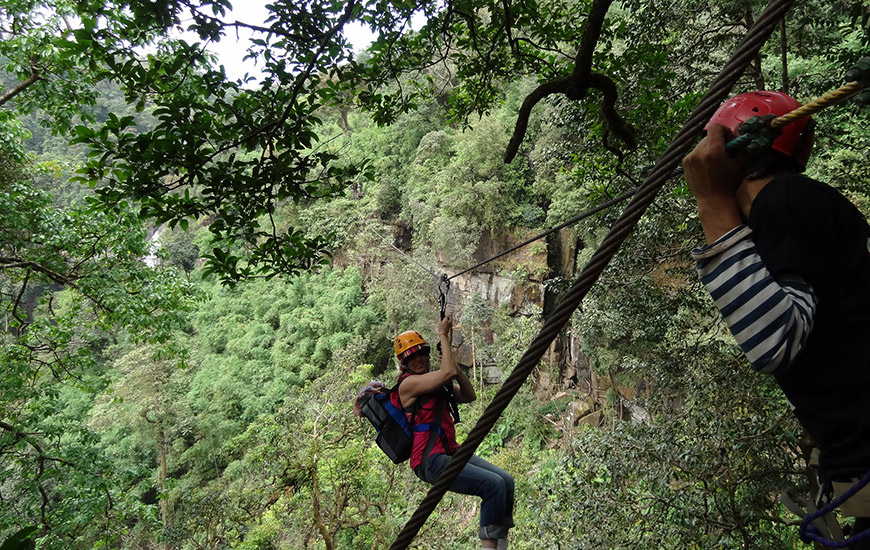
Zip lining in Dong Hua Sao NPA.
North of Paksong lies the serene
village of Tat Lo. Despite being home to several businesses started by foreigners, this village has not succumbed to the party vibes like Vang Vieng has, and both locals and ex-pats are intent on keeping it that way. Despite not being located on the actual plateau, rather it sits right on its edge, the impressive level of English and plentiful options for day-trips makes it a prime location to serve as a base for exploring Bolaven.
The surrounding area contains three
waterfalls worth seeing, the first one being
Tat Soung, which cascades down the edge of the Bolaven Plateau, culminating in a 50 meter . Unfortunately, the falls have been severely damaged by the construction of a hydroelectric dam, and outside of the heavy rains of August to October, might not make for a very spectacular sight.
Nearby
Tat Lo, from where the village gets its name, has suffered less from the construction of the dam, and as such is more consistent year round. However, it is not a large waterfall and unless you’re specifically interested, might not be the best use of your time, given the plethora of waterfalls to see in the region.
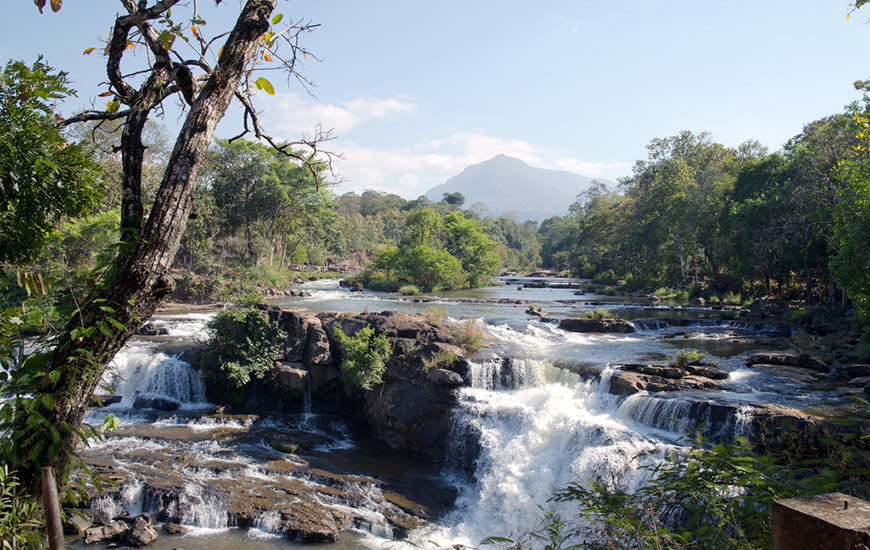
The rapids of Tat Hang are stunningly beautiful.
Finally, 500m downriver from Tat Lo is Tat Hang. Measuring 6 meters in both width and height, Tat Hang is layered over multiple steps which makes it strikingly beautiful no matter the water level.
For a more cultural experience, head over to
Ban Houay Houn, where the local women of the Katu tribe are famous for their weaving. While the traditional Katu colours of red and black dominate, the weavers have diversified in modern times and now produce clothes in every colour under the sun.
Only a short drive from Tat Lo, foreigners are a rare sight in
Salavan, lending it a feeling of remoteness that you wouldn’t expect. In the town, you can visit
Wat Kang Salavan, a large monastery most notable for being dedicated to storing Buddhist scriptures by submerging them in a pond in an effort to keep termites away from the sacred texts.
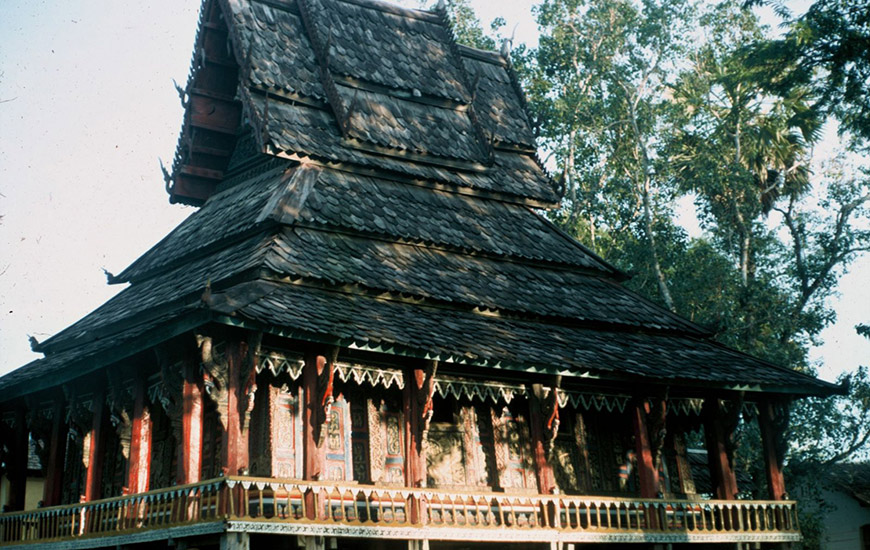
Buddhist scriptures are stored safely at Wat Kang Salavan by submerging them in water.
Over by the river, you have
Prince Souphanouvong’s Bridge. Due to it’s location on the Ho Chi Minh Trail, the bridge was heavily bombed and destroyed in 1968 in order to deny the North Vietnamese its use. Since it still remains in its destroyed condition, it has become a bizarre yet stark contrast between a peaceful sleepy town and the horrors of war.
Salavan province is also home to some 350,000 people from various ethnic minorities, and both tours and solo-adventures to explore the ethnically diverse countryside are popular with the few travellers who make it here.
Yet another sleepy town,
Sekong takes its name from the river it rests next to. The town was built from nothing in 1984, and as such doesn’t contain a lot of attractions. It’s also the smallest province in the country in terms of population, as well as one of the poorest.
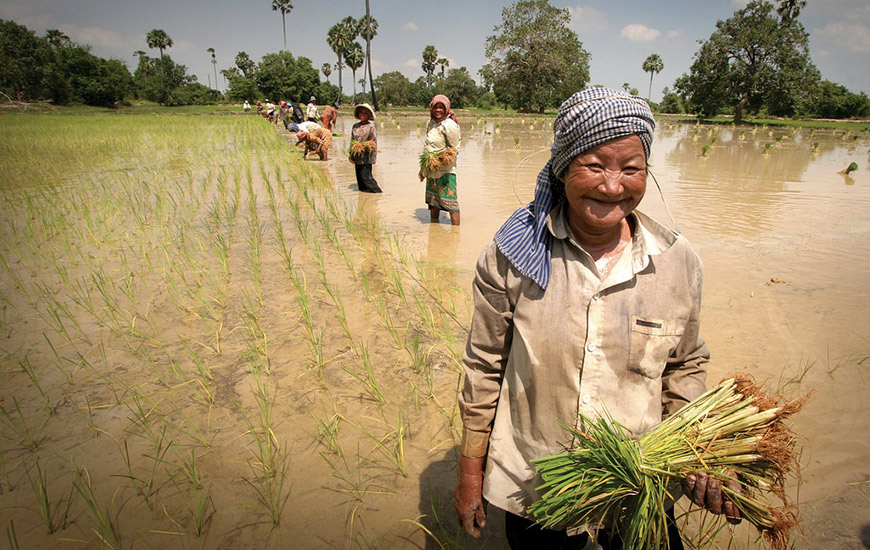
Local women working their field in Sekong.
Unusually for Laos, the province contains almost no temples. This is due to the fact that almost all of its inhabitants are from the 14 different tribes of ethnic minorities, with very few Lao people residing here. These minorities, unlike the majority of the Laotian population, are not Buddhist, but animist, and so the usual Laotian fare of temples and monasteries can not be found here.
Outside of town there are two waterfalls of note. First up is
Tat Faek, a wide and beautiful waterfall where you’re allowed to swim in the pools. Be aware of the pa pao fish that live there though, as they’ve been known to bite swimmers with their razor sharp teeth.
Second is
Tat Hua Khon, three kilometres away from Tat Faek. The falls are 7 metres tall and a staggering 100 metres wide, making it stand out among the many other waterfalls you will no doubt pay a visit to while in Bolaven.
South of Sekong, the
capital of Attapeu province (also named
Attapeu) lays on the confluence of the Kong and Kaman rivers. Decked out with lush trees and bushes everywhere, the town is known as “Garden Village”, and is home to a surprising amount of wild buffalo. While the town has a relaxed atmosphere and makes for a pleasant visit, the region’s pattern of unexciting towns surrounded by amazing nature holds true here as well.
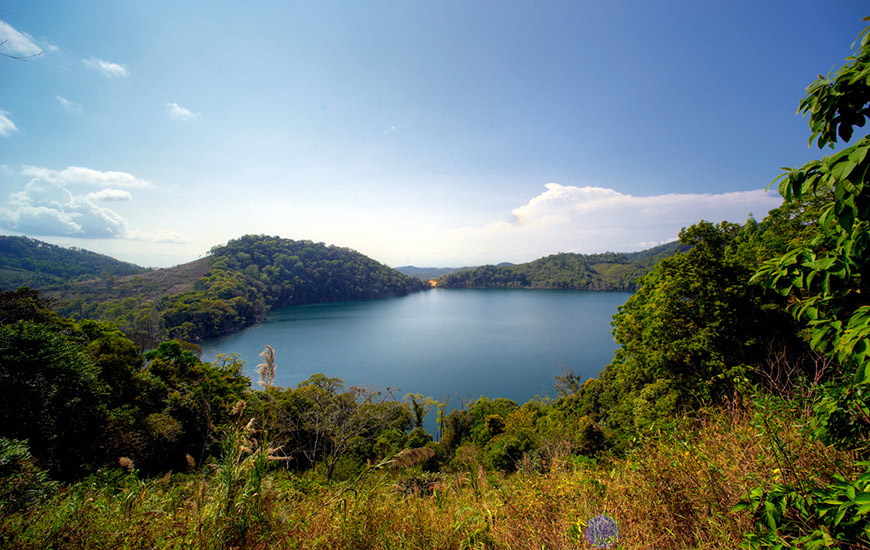
Nong Fa Lake is a stunningly blue crater lake.
First up among the surrounding sights is
Saisettha, which contains a large amount of stunning Buddhist art in the form of paintings recounting the Buddha’s penultimate birth in Wat Siliawat That Inping and murals depicting the Buddha’s life in Wat Ban Xai. The third temple here,
Wat Luang, serves as the final resting place for King Setthathirat.
The nearby
village of Pa-Am was once an important confluence of routes part of the Ho Chi Minh Trail, and as such received exceedingly heavy bombardment during the war. The main attraction here is a Russian missile platform displayed behind a fence constructed using bomb casings.
Finally, once Laos’ most pristine NPA,
Dong Amphan has in recent years seen plenty of industries encroaching on its forests. Despite this,
Nong Fa (Sky Blue Lake) is still a stunning sight, and worth the trip here on its own. The lake lies in an ancient volcanic crater at 1500 metres of elevation, making the views facing away from the lake just as amazing as the ones facing it. Despite the recent encroachment of industry, the park is still home to wild tigers, elephants and a huge amount of bird species. The most popular way of visiting is through a 2 day tour, with accommodation arranged in a homestay.
Culture & Arts
As the coffee capital of Laos, a great way to experience the culture of the region is to stay in a homestay on an actual coffee plantation. The production of coffee is one of the central pillars of the culture on the plateau, and staying at a plantation in Tat Lo will give you an excellent close-up look of how the farmers live their daily life.

Local women preparing their goods at a market in Salavan.
The market in Salavan is another great cultural experience. Here, women from the aforementioned ethnic tribes in the surrounding countryside haul in various exotic food products acquired in the forest, such as mushrooms, ant eggs and monitor lizards.
Finally, in Sekong, there is the Sekong Provincial Historical Museum. While the ground floor is filled with the usual fair of unexploded ordnances and remnants from the war, the second floor has fantastic tribal displays, mainly of the Katu but also other tribes.
Food and Drink
The biggest culinary draw to Bolaven is without a doubt its coffee. Being the coffee capital of Laos, there are numerous plantations to visit, sample coffee and even stay the night at. There are also coffee tours you can book in Paksong, which lets you observe the entire life cycle of the coffee, from bean to cup, before having a taste of it yourself.
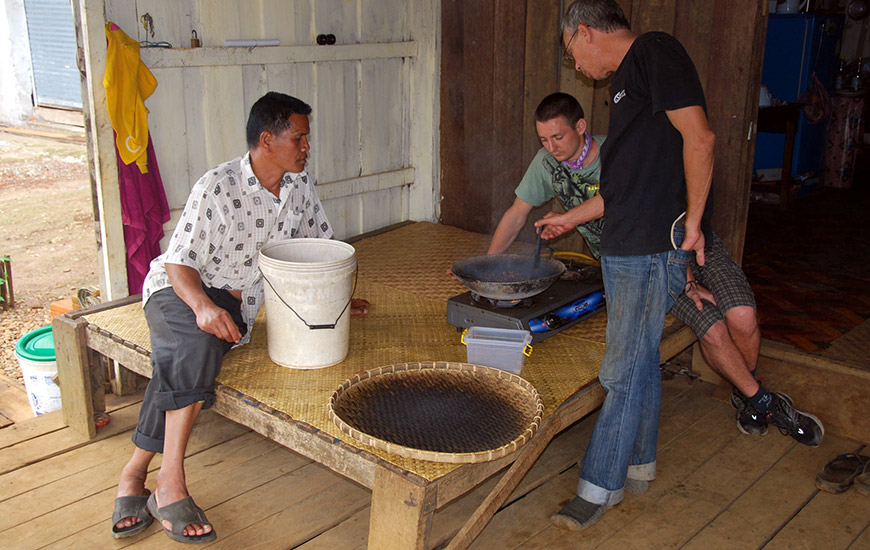
See every part of the coffee-making process.
Festivals and Events
The Boub Lapeup festival is held in Toumlan, near Salavan, and focuses on paying respects and guiding the ancestors of the Katang people. Held at varying times each year, as the hosting family generally picks a time that is the most convenient for them, villagers gather to play drums and dance around a ceremonial structure. The main event, namely the sacrificing of buffaloes, follows and the sacrifices are intended to guide recently deceased relatives to join the spirit already protecting their home.